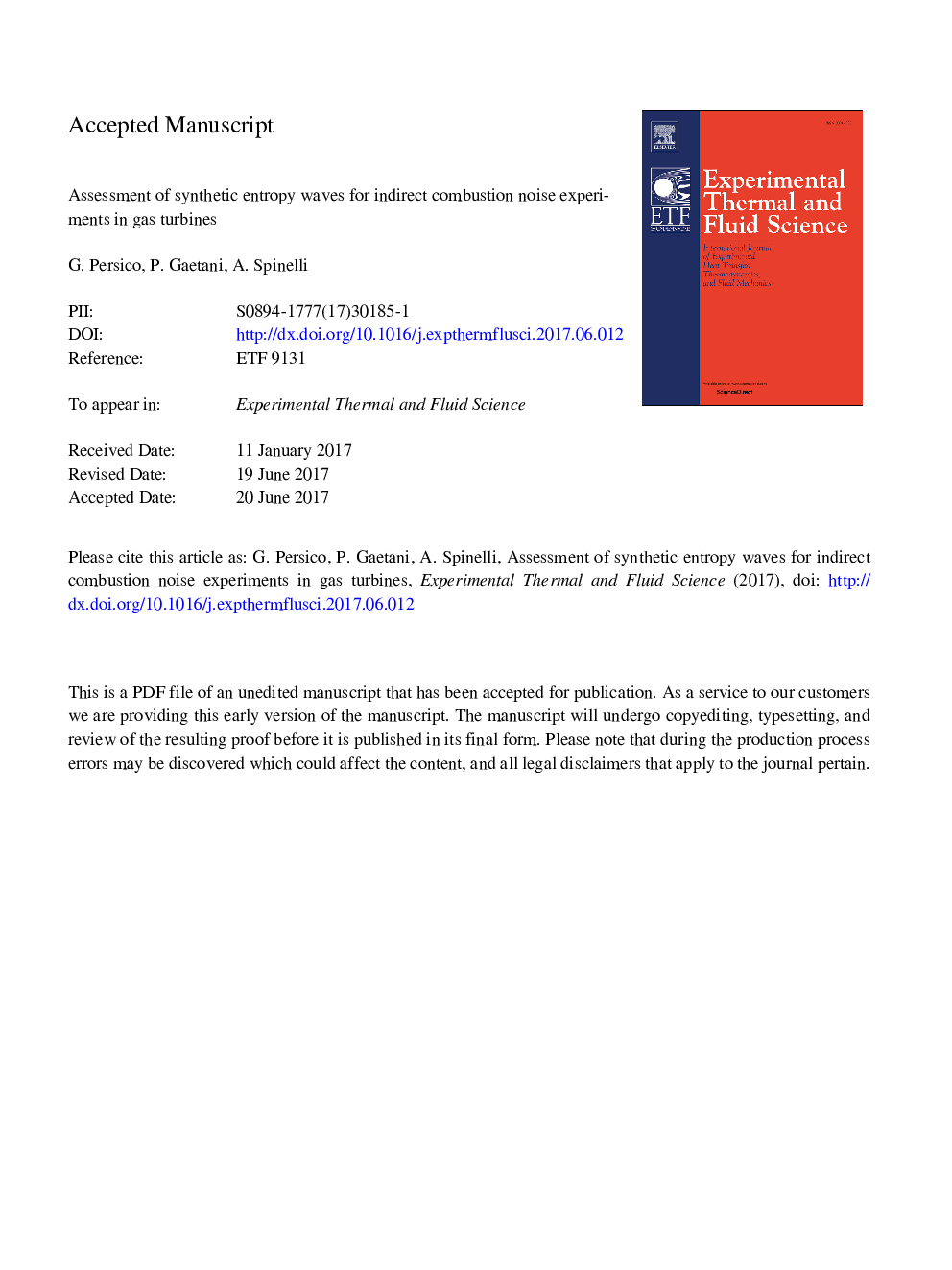| Article ID | Journal | Published Year | Pages | File Type |
|---|---|---|---|---|
| 4992591 | Experimental Thermal and Fluid Science | 2017 | 33 Pages |
Abstract
Results indicate that, by assigning an optimal feeding pressure to the generation device, circular-shaped spots of hot air characterized by a sinusoidal temperature fluctuation and very weak pressure oscillations are injected into the main stream, properly simulating the entropy waves expected in the core of aero-engines. The amplitude of the temperature oscillation reduces during the stream-wise propagation of the wave and increasing the wave frequency. However, by adopting a proper insulation technology and assigning a sufficiently high thermal power to the generation device, temperature perturbations of the order of 30Â K (i.e., 10% of the mean temperature level) at 90Â Hz are achieved. These values match the target of entropy noise studies in the turbine test rig.
Related Topics
Physical Sciences and Engineering
Chemical Engineering
Fluid Flow and Transfer Processes
Authors
G. Persico, P. Gaetani, A. Spinelli,
